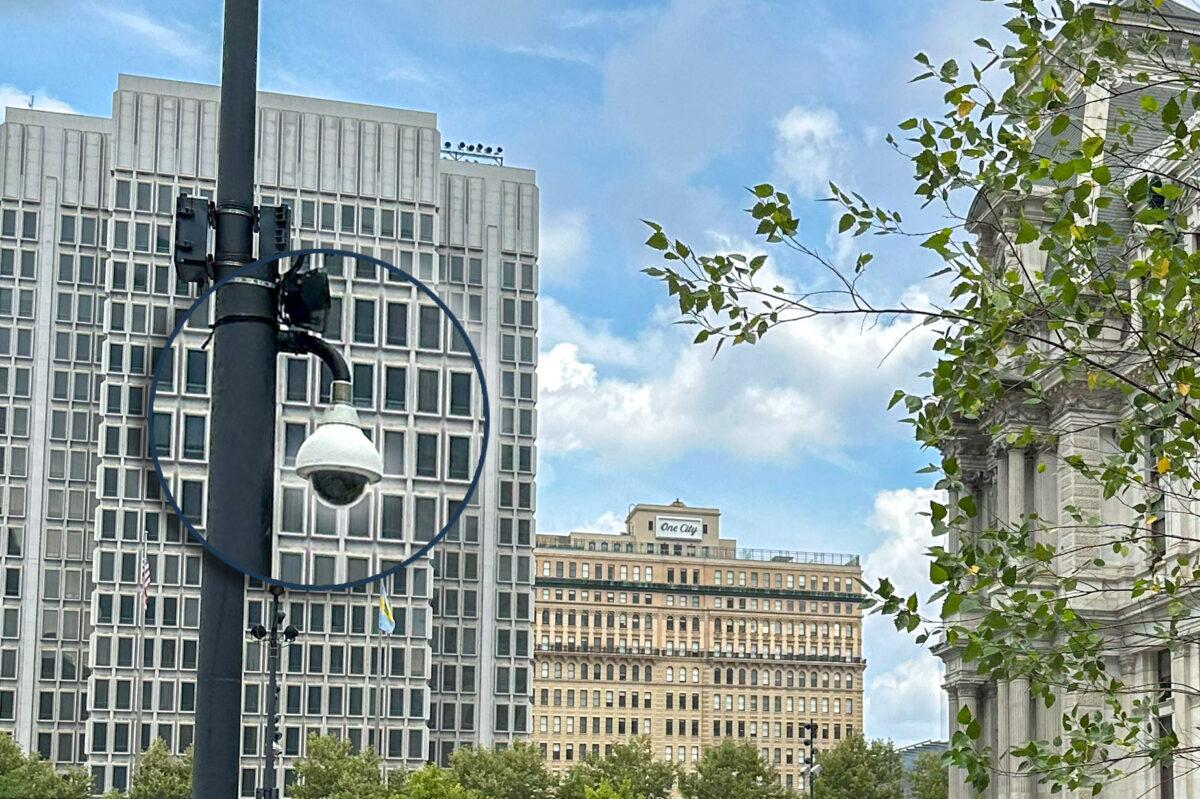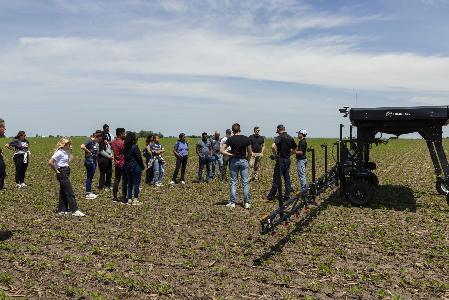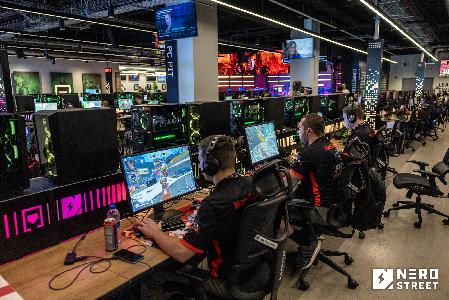As video surveillance cameras have become cheaper and more ubiquitous, they have also grown more powerful – featuring increasingly high-definition images and the ability to pan, tilt and zoom. But as the recent Philadelphia Inquirer investigation shows, the most significant change to cameras like those used in Philly is the networks that police departments set up to aggregate these countless images of city residents’ daily lives.
A variety of AI tools can also harvest this data in new ways that some may find alarming.
Automated license plate reader software can both track drivers across the city in real time and create a long-term log of their cars’ movements. Want to know where a driver is now or was parked two years ago? Just check the database.
And pedestrians are no less prone to surveillance. Facial recognition software can scan images to automatically identify individuals and track them across the city.
How widespread is this technology?
The Inquirer’s investigation uncovered that the city’s network grew at an astounding pace over the past decade, going from 216 cameras to what it describes as a “little-scrutinized, 7,000-camera system that is exposing residents across the city to heightened surveillance with few rules or safeguards against abuse.”
But those are just the cameras that city officials directly control and can access in real time.
In addition, police routinely turn to the images captured by private surveillance cameras. This includes everything from multimillion-dollar, internet-enabled camera systems at large stores, offices and universities to the individual cameras that homeowners or small-business owners screw into their door frames or exteriors. The public simply has no idea how many of these private cameras are in operation or how often their data is requested.
How is this different from traditional police video surveillance?
Traditional cameras offered a narrow, grainy perspective on a single fixed place. These systems not only collected much less data than contemporary cameras, but they also retained far less.
A single CCTV camera at a bank might help police identify a suspect in a robbery, but it poses no privacy threat beyond that. It is confined to a small space where privacy concerns are minimal and security concerns are high. But mass camera deployments create a fundamentally different model, collecting far more information on all of us and creating far greater potential for misuse.
A single camera can capture our image; a citywide camera system can reconstruct our livesAlbert Fox Cahn Surveillance Technology Oversight Project
Police have attempted these techniques for decades, but the technology simply wasn’t up to the task. When the City of London Police deployed its so-called “ring of steel” security system in the 1990s, fewer than two dozen cameras tried to track the cars entering a tiny portion of the British capital, surveilling roughly a square kilometer of the city’s financial core. Officers manually jotted down vehicle plate numbers and surveilled drivers’ profile photos.
The labor-intensive exercise was impossible to scale.
To deploy such a system across an entire city would likely have taken every police officer in the city and then some. Through automation, technology enables this mass surveillance by reducing the marginal cost of tracking, allowing police to expand monitoring far more broadly than would have been financially or pragmatically possible before.
The Philadelphia Inquirer article detailed how narcotics cops not only allegedly failed to disclose their use of video surveillance in arrest reports or to prosecutors, but also that the video footage at times proved officers were lying when they testified.
What privacy concerns does it raise?
A single camera can capture our image; a citywide camera system can reconstruct our lives. Networked camera systems like those in Philadelphia, when combined with smartphones and other internet-enabled devices, allow officers to reconstruct an individual’s movements for days or weeks at a time, all without any court oversight.
While it would take a warrant to install a GPS tracker on a resident’s car, police can recreate GPS-like location tracking without a warrant, all thanks to mass camera systems. And facial recognition in municipal cameras threatens the First Amendment, which protects freedom of speech, religion and peaceful assembly. The police are armed with a way to track nearly every person at a political protest, abortion clinic or house of worship. Such surveillance melts away the anonymity that is indispensable to an open society.
Are there other risks or unintended consequences?
I believe giving thousands of city employees the keys to a small surveillance state is a recipe for disaster.
The Philadelphia Inquirer found that the city has policies that forbid zooming in on residents for amusement, spying on someone by zooming in through their window, or blatant racial profiling. But what it didn’t find was evidence that these safeguards were being enforced.
When thousands of employees can spy on their neighbors, romantic partners and business rivals on a whim, it raises the question: Who watches the watchers?
At least for now, the grim answer appears to be no one.
Before you go...
Please consider supporting Technical.ly to keep our independent journalism strong. Unlike most business-focused media outlets, we don’t have a paywall. Instead, we count on your personal and organizational support.
3 ways to support our work:- Contribute to the Journalism Fund. Charitable giving ensures our information remains free and accessible for residents to discover workforce programs and entrepreneurship pathways. This includes philanthropic grants and individual tax-deductible donations from readers like you.
- Use our Preferred Partners. Our directory of vetted providers offers high-quality recommendations for services our readers need, and each referral supports our journalism.
- Use our services. If you need entrepreneurs and tech leaders to buy your services, are seeking technologists to hire or want more professionals to know about your ecosystem, Technical.ly has the biggest and most engaged audience in the mid-Atlantic. We help companies tell their stories and answer big questions to meet and serve our community.
Join our growing Slack community
Join 5,000 tech professionals and entrepreneurs in our community Slack today!






